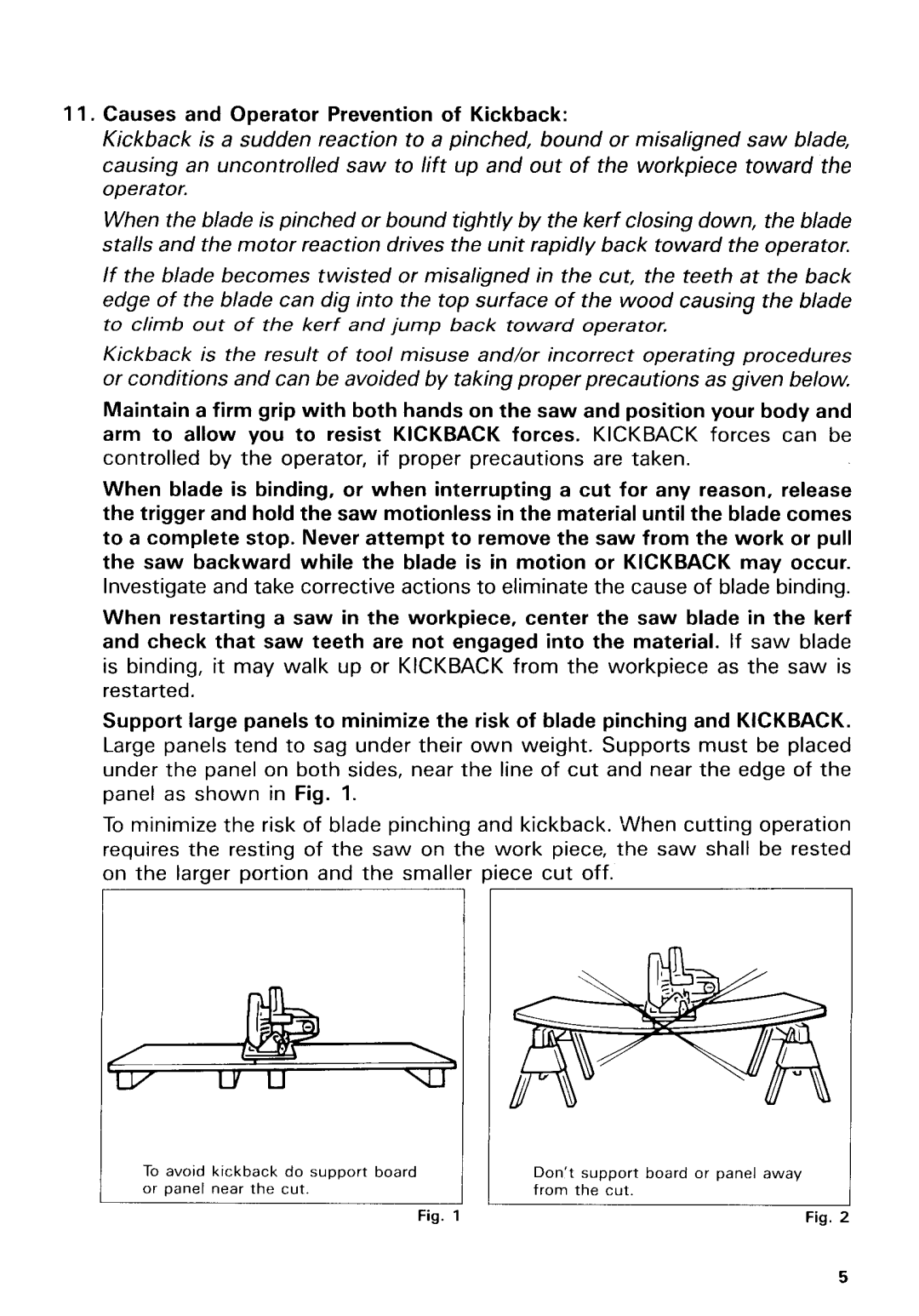5680DWB, 5630DWA specifications
The Makita 5630DWA and 5680DWB are two powerful cordless saws designed for precision cutting tasks in various applications. Both models are part of Makita's expansive range of cordless power tools, bringing together advanced technology and user-friendly features for enhanced performance.The Makita 5630DWA is equipped with a 190mm blade, allowing it to make clean, accurate cuts in wood and other materials. It features a high-performance 18V Lithium-Ion battery, which provides ample power and a longer run time, making it ideal for extended use in demanding tasks. One of its standout features is the electronic brake, which stops the blade quickly after releasing the trigger, enhancing user safety and control.
Additionally, the 5630DWA comes with a built-in laser guide, ensuring precision in alignment and cutting, which is particularly beneficial for professional carpenters and DIY enthusiasts alike. The lightweight design of the saw contributes to reduced fatigue when used for prolonged periods, making it more comfortable to handle.
The Makita 5680DWB, on the other hand, is designed for more demanding tasks and features a slightly larger blade size, providing a deeper cutting capability. It also supports the same high-capacity 18V Lithium-Ion battery, ensuring that users receive consistent power for a variety of applications. One innovative technology in the 5680DWB is its automatic torque drive function, which adjusts cutting speed and torque based on the material being cut, optimizing performance and efficiency.
Another impressive feature of the 5680DWB is its adjustable cutting depth and bevel angle, allowing for versatile cutting options to meet the specific needs of any project. The tool's robust build quality ensures durability and longevity, making it a reliable addition to any toolkit.
Both models benefit from Makita’s commitment to user ergonomics, with soft-grip handles that provide comfort and control while reducing vibrations during use. Moreover, these cordless saws are compatible with a wide range of Makita accessories, enhancing their versatility.
In conclusion, the Makita 5630DWA and 5680DWB are exemplary tools that combined power, precision, and user-friendly features. Whether for professional use or home improvement, these saws stand out as reliable choices for anyone looking to take on cutting tasks effectively.

